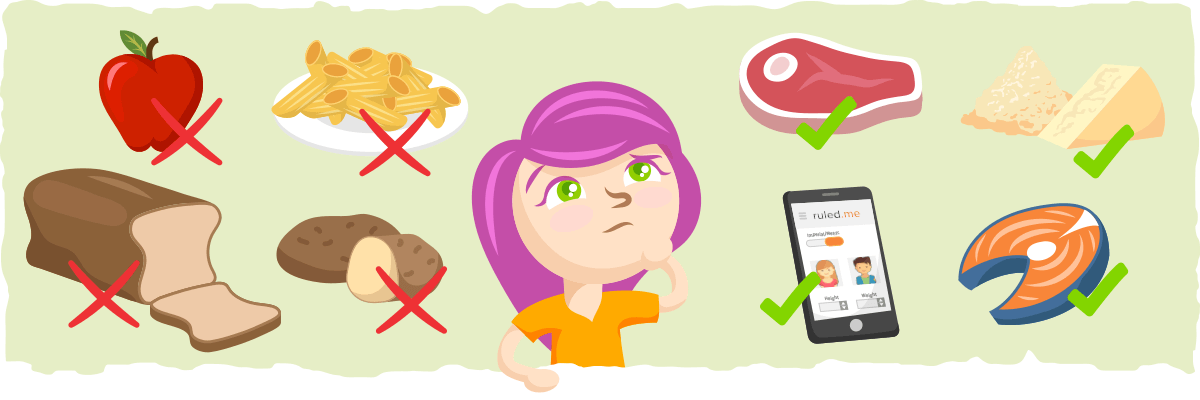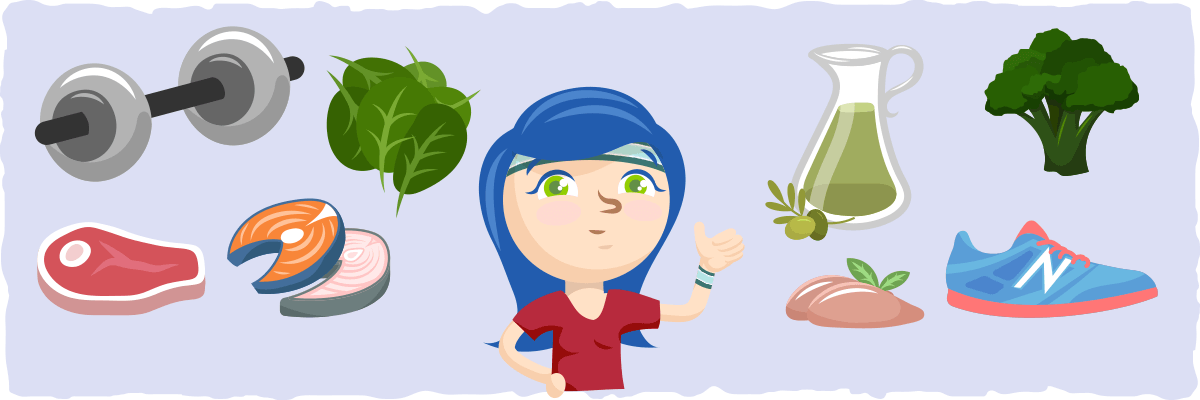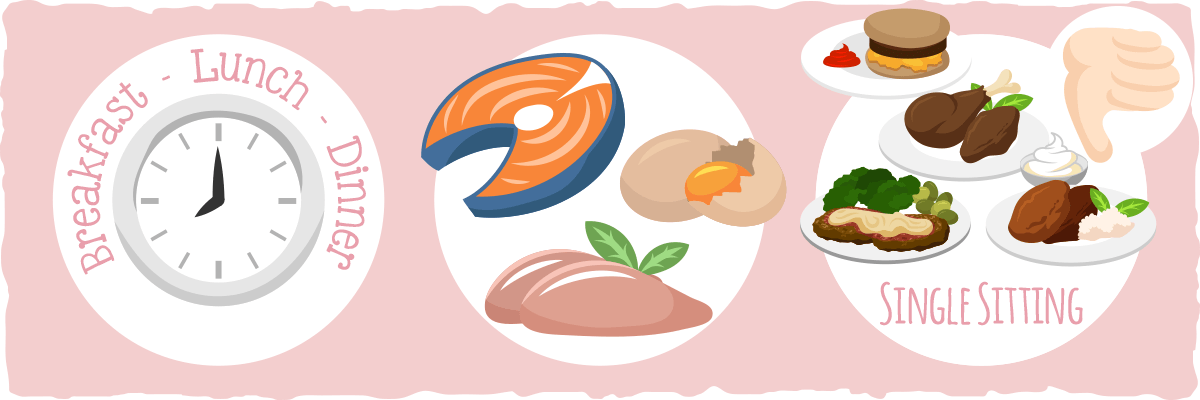There’s a number of myths, misconceptions, and misinformation floating around that are confusing a lot of people about the ketogenic diet. They’re proposing ideas like “carbs are absolutely necessary to build muscle” and “The ketogenic diet hurts exercise performance” that take a small finding and exaggerate its meaning.
With all of the conflicting information about these topics, it is easy to become discouraged and think that you can’t get the health benefits of keto without losing muscle mass, strength, and endurance. Fortunately, this isn’t the case.
The truth is that — with a deeper understanding of how the body works and what it needs when carbohydrates are being restricted — it is possible to experience the health benefits of keto, increase muscle mass, and improve exercise performance at the same time. No carbs required.
You Need Carbs To Build Muscle

People that tell you this don’t understand how muscle building really works – it’s entirely possible to be gaining muscle mass while on keto.
In a simple way, the 3 easy steps to build muscle are:
- Eating enough protein – For mass building between 1.0 – 1.2g / pound of LEAN body mass.
- Eating a calorie surplus – You can’t build muscle without eating more calories than you need, and these come from fats in a ketogenic diet.
- Training correctly – You need to promote hypertrophy in your muscles.
Are carbs good for building muscle? Of course they are – they promote insulin release and help restore glycogen in the muscles. With carbs, you gain mass quicker, but that’s because you’re also gaining fat.
What exactly is glycogen? It’s a molecule that our bodies use as energy.
What exactly does glycogen do? Wikipedia explains it nicely:
In humans, glycogen is made and stored primarily in the cells of the liver and the muscles, and functions as the secondary long-term energy storage (with the primary energy stores being fats held in adipose tissue).
Muscle cell glycogen appears to function as an immediate reserve source of available glucose for muscle cells. Other cells that contain small amounts use it locally as well.
As you can see, glycogen is being used as a secondary source of energy, where fats are being used instead of it. Once your body has become adapted to using fats (you’re in ketosis), then little glycogen is actually needed.
That little amount of glycogen you need? Well, it can be created from the protein you eat in a process known as gluconeogenesis.
Are carbs necessary for building muscle? Of course not – You can still refill glycogen stores in muscles by following a ketogenic diet. The ketogenic diet is great for building muscle as well because the protein intake is relatively high and you’re unlikely to lose muscle mass.
In fact, even if your protein intake is low, the ketogenic diet can still elicit a muscle sparing effect. More specifically, the ketone body called beta-hydroxybutyrate (BHB) — that is produced by keto-adapted individuals in higher quantities — has been shown in one study to decrease leucine oxidation and promote protein synthesis.
On top of that, carbohydrate restriction provides an adrenergic stimulus to the body that has been found to prevent muscle breakdown. In other words, when blood sugar levels are low, the body releases adrenaline, which prevents muscle proteins from being broken down.
Although ketones and adrenaline can help preserve muscles mass, this doesn’t mean that you should eat less protein. It is essential that you eat the appropriate amount of protein that you need to meet your goals. If you are unsure of what your nutrient intake should be, head over to our Keto Calculator to help out.
Putting mass on may be slower on a ketogenic diet, but that’s because you will primarily be putting lean mass on (without the extra fat). If you need to put total mass on quicker with the keto diet, then you can achieve your goals through other methods. Check out my alternative ketogenic diet post for more specific advice.
Key Takeaway: Carb consumption is not essential to maintain or build muscle. As long as you eat the right amount of protein and calories and train correctly, you will gain muscle mass. On the other hand, if you are looking to preserve muscle mass while you lose fat, the ketogenic diet is your best option. By limiting carbs, you will stimulate two processes — ketosis and adrenaline release — that reduce muscle protein breakdown.
It Will Hurt My Performance

If it’s not about building muscle, people will argue that performance is decreased while on a ketogenic diet. That just isn’t true at all. This study was done on well-trained cyclists who were on a ketogenic diet for 4 weeks.
The results show that aerobic endurance was not compromised at all. Their bodies adapted through ketosis, limiting both glucose and glycogen stores, and using fats as the predominant energy source.
Before your body enters ketosis and can use fats as the primary source of energy, you will see some strength and endurance loss. BUT, once your body becomes adapted to the fat intake, you will begin to convert fats into ketones to be used as a source of energy for both strength and endurance.
Even if you are doing very long cardio training, marathons and biking included, a ketogenic diet has been proven time and time again.
Summed up, the paper explains that a very low carbohydrate ketogenic diet can be useful for weight-class based athletes in their respective sport. Over the 30 day period of the study, on 8 different athletes, the results came out to be the same.
The athletes were fed a strict diet of green vegetables, olive oil, and high-quality proteins (fish and meat). In all of their physical tests, they performed the same as when the initial tests were done.
Each athlete decreased their body weight, their body fat, and kept their muscle mass near enough the same. None of them had negative effects on their strength performance over the course of the study.
The only real time where ketosis can give performance loss is in exercises that need an explosive action. If you need a little boost in your performance during these, you can “carb-up” by eating 25-50g of carbs about 30 minutes before you train. This “carb-up” approach is otherwise known as the targeted ketogenic diet (for more on this variation of keto, click the link).
Another way to improve high-intensity exercise performance is by following the cyclical ketogenic diet. This is a variation of the ketogenic diet that requires you to eat a strict ketogenic diet for 5-6 days to get the benefits of ketosis and a higher-carb diet 1-2 days a week to restore glycogen levels and help improve high-intensity exercise performance. Athletes who play explosive sports like football, soccer, lacrosse, and hockey and people who do high-intensity training multiple times a week like CrossFit and heavy weight-training will benefit most from the cyclical ketogenic diet.
In general, carbing up — whether it is right before training or during carbohydrate refeeding days — will give your muscles the instant energy that they need to be explosive without mitigating the benefits of the ketogenic diet. If you are still curious as to why certain types of training require carbohydrates while others don’t, you’ll find an in-depth look at this issue in our guide to keto bodybuilding.
Key Takeaway: The ketogenic diet will not hurt exercise performance for endurance activities like jogging and cycling. High-intensity athletes and exercise trainers, however, may experience a decrease in explosive power while they adapt keto. This is why they may benefit from properly timed carbohydrate consumption. The targeted ketogenic diet works best for high-intensity exercise beginners, while the cyclical ketogenic diet is ideal for high-intensity athletes and experienced exercise trainers.
Timing is Everything With Protein

Many people seem to believe that a large amount of protein eaten in 1 sitting is wasted. The myth that’s floating around is that if you eat more than 30g of protein in 1 sitting, the rest is wasted.
Where did this 30g of protein come from? I have no clue, it may have been assumed from the 10g/hour standard that many bodybuilders use in their typical meal approach.
Nutrient timing provides minimal results in regular trainers. Fulfilling your daily nutrient needs is, by far, the most important thing. That being said, you probably don’t want to sit down and eat 150g of protein in one sitting, as this can bring you out of ketosis.
Eating too much protein at once is fine; none of it will be wasted. As you eat high amounts of protein, your body can regulate the speed at which the intestines contract, resulting in slower digestion for proper absorption.
In normal conditions, your small intestine is responsible for sucking up all that fantastic protein as you digest it. In fact, it’s been shown that it absorbs about 95% of your protein.
If by chance you skip a meal and have to eat 100g of protein in one sitting, your small intestines won’t be able to properly absorb all of it. When this happens, your small intestine will store the proteins amino acids and release them as the body needs, and even recycling them if that’s needed.
Key Takeaway: Make sure you are eating enough protein every day to meet your body composition goals. To keep protein from kicking you out of ketosis, break up your protein intake evenly throughout your daily meals.
Practical Applications for Exercise Training on The Ketogenic Diet
Now that we know the truth behind these common keto training myths, what can we do about them?
Here’s a quick overview of actionable steps that you can use to implement what you have learned from this article:
- Eat enough protein. For example, to gain muscle the body requires around 1.0 – 1.2 grams of protein per pound of lean body mass. However, to get a much more accurate estimation of your personal protein needs, use our Keto Calculator.
- Distribute your protein intake evenly amongst your meals. Protein timing doesn’t matter nearly as much as your daily protein intake. But this doesn’t mean that you should eat 100 grams of protein at one meal — this will rapidly decrease your ketone levels. On the ketogenic diet, it is best to break up your protein intake evenly throughout your daily meals.
- Eat the right amount of calories to meet your goals. If your goal is to build muscle on the ketogenic diet, you must eat more calories than your body needs, and make sure those calories come from fat. On the other hand, if you want to lose body fat and maintain muscle mass, then you must increase protein intake while you are in a calorie deficit. To clear up any calorie confusion, use our Keto Calculator.
- Train correctly. To promote muscle growth, you must lift weights (e.g., free weights, machine weights, body weight, etc.).
- Use carbs as a tool to improve high-intensity exercise performance. High-intensity exercise requires glucose. The best way to ensure that you get the benefits of keto and carbohydrates at the same time is by using the appropriate ketogenic diet.
By using these recommendations, you will get the positive results that you expect from the ketogenic diet. If you want to take your results one step further by using supplements or keto-specific training methods, you will find some helpful options in our keto bodybuilding article.
On the other hand, If you still have some concerns about the safety of a high-fat, low-carb diet (that aren’t related to exercise training), then read through our article on the safety of keto and ketosis. There, you’ll find the answers to the most common keto questions and concerns.
When you are ready to get started on your keto journey, our beginner’s guide to the ketogenic diet will give you the information you need to follow the diet properly.
